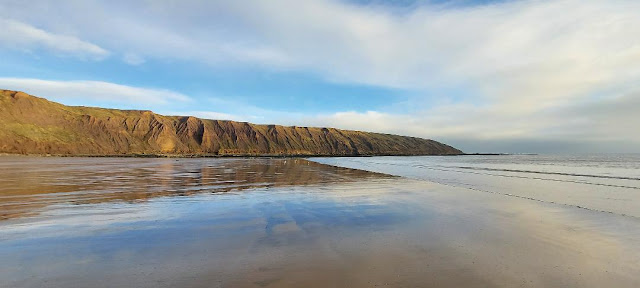Long-tailed Tit of the (very) distinctive local race, Lesvos, Greece
This is the final part of the year's reviews, covering October, November and December
After three weeks (unusually) on home ground, late September and early October once again ushered in very welcome travels, this time to the Greek island of Lesvos.
The last few years - pandemic notwithstanding - have involved autumn birding trips with a small team of good friends (Israel '18, Unst '19 and mainland Shetland '21), but this year, we decided on somewhere a little further afield - and as warm, relaxing and as bird-filled as possible; happily, Lesvos fulfilled all of those requirements and more, and Rich, Will and I had a memorable ten days there.
Red-footed (above) and Eleonora's Falcons, Lesvos
A beautiful island, great company, landscapes, people, food, and high-quality birding was very much appreciated and enjoyed, and I wouldn't be at all surprised if we find our way back there in the near future. More
here,
here and
here.
Red-backed Shrike - one of the commonest migrant passerines of the trip
Back in the neighbourhood by the second week of October, and into an intense period of guiding and surveying. Guiding consisted of a run of my YCN Autumn Migration Days up here on the nearby North and East Yorkshire coast, followed by two weeks at the wonderful Spurn Bird Observatory.
Rich and I have a great routine in place down there these days, whereby we're embedded for two five-day trips in late October and early November respectively - Rich leading the residential groups, and I leading a new client team every day (reconvening for dinner and drinks at the Crown every evening, of course).
We time it to coincide with (what we hope) is the peak of late-autumn migration - the business end of the season, so to speak - and while big arrivals can't be guaranteed, plenty of good birding can. And this year, well, the birding gods were very much on our side, with dramatic falls of migrants augmenting what is always a great place to soak up east coast birding at its finest.
Bearded Tit at the Warren, Spurn, November
More
here (and if you'd like to join us in '23, check out the schedule
here).
One of many, many Goldcrests at Spurn
Back for a couple of days, and then on the road again - northbound this time, and back to the Highlands for our regular early winter week at the Grant Arms Hotel. We have the privilege of an annual invitation to stay at this wonderful, wildlife-themed Victorian hotel in Grantown-on-Spey, which includes giving a few talks and leading a few excursions; unsurprisingly, we had a blast.
Golden and White-tailed Eagles in the Highlands, November
More
here and
here - and I'll be back there again for Seaduck Week '23 if you want to join me....
We arrived back home in Filey late at night on the 14th to the sound of thrushes arriving in the mist over the town; with a south-easterly blowing and heavy rain forecast from maybe an hour or so after sunrise, I couldn't resist an early start on Carr Naze the following morning.
It was still barely light with a threatening bank of black cloud approaching over the sea as I reached the seaward end around dawn, when I locked eyes with a heart-stoppingly pale Wheatear on the cliff path.....
...long story short, for once, it all worked out, and then some. It may have been a (predictably) brief experience, but it was a mercifully conclusive and ultimately hugely satisfying one - a dream bird to find on my doorstep, just as the final seconds of autumn migration's stoppage time ticked away. (Thank you, birding gods,
I still believe).
Black Redstart, Spurn, November
December? Finally, the pace slowed - well, in most respects: I ran a total of 80km during the month towards my #ASwift1K challenge, raising funds for the wonderful people of the Sheffield Swift Network - clocking up as many kilometres as I could as I entered the final strait of my 12-months running and cycling 1000km. You can read about my challenge and why i'm doing it
here.
The Brigg, December '22. Not the worst view to have at the end of your road.
So, that was 2022. After the previous two years of uncertainty, it was wonderful to get back up to full speed in every respect, and a privilege to have enjoyed so many great birds and places, often with lovely humans, in a very busy and productive twelve months. Here's hoping 2023 is equally blessed.
Sanderling, Filey, December






























































